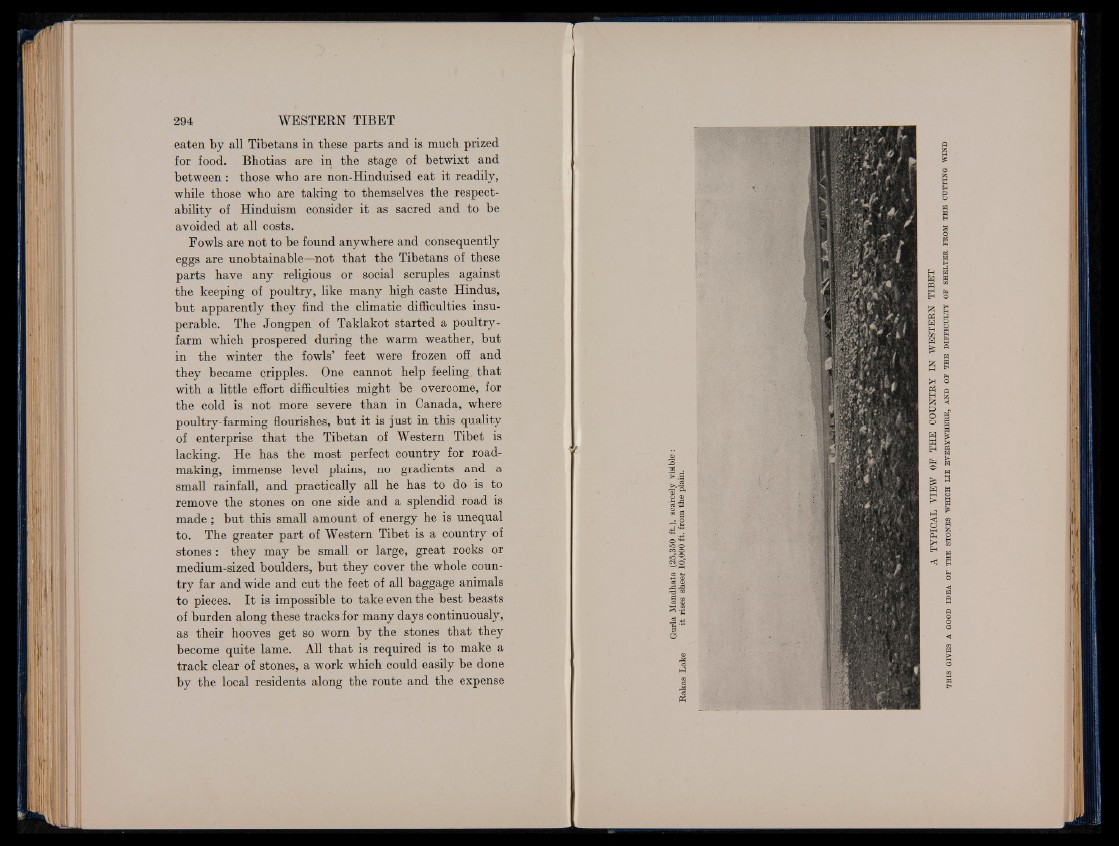
eaten by all Tibetans in these parts and is much prized
for food. Bhotias are in the stage of betwixt and
between: those who are non-Hinduised eat it readily,
while those who are taking to themselves the respectability
of Hinduism consider it as sacred and to be
avoided at all costs.
Eowls are not to be found anywhere and consequently
eggs are unobtainable—not that the Tibetans of these
parts have any religious or social scruples against
the keeping of poultry, like many high caste Hindus,
but apparently they find the climatic difficulties insuperable.
The Jongpen of Taklakot started a poultry-
farm which prospered during the warm weather, but
in the winter . the fowls’ feet were frozen off and
they became cripples. One cannot help feeling, that
with a little effort difficulties might be overcome, for
the cold is not more severe than in Canada, where
poultry-farming flourishes, but it is just in this quality
of enterprise that the Tibetan of Western Tibet is
lacking. He has the most perfect country for road-
making, immense level plains, no gradients and a
small rainfall, and practically all he has to do is to
remove the stones on one side and a splendid road is
made; but this small amount of energy he is unequal
to. The greater part of Western Tibet is a country of
stones: they may be small or large, great rocks or
medium-sized boulders, but they cover the whole country
far and wide and cut the feet of all baggage animals
to pieces. I t is impossible to take even the best beasts
of burden along these tracks for many days continuously,
as their hooves get so worn by the stones that they
become quite lame. All that is required is to make a
track clear of stones, a work which could easily be done
by the local residents along the route and the expense
Gurla Mandhata (25,350 ft.), scarcely visible:
Rakas Lake it rises sheer 10,000 ft. from the plain.